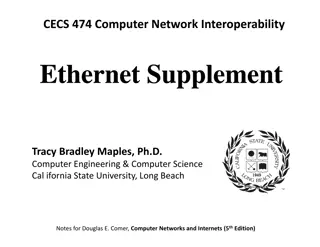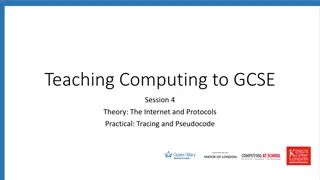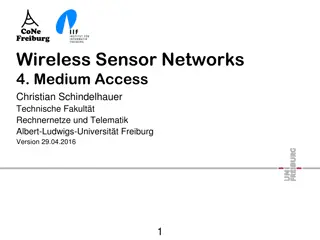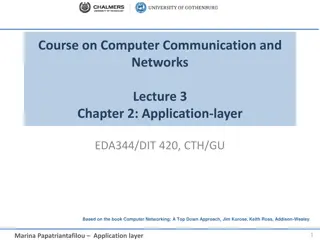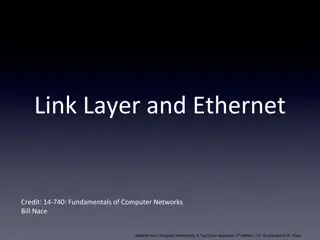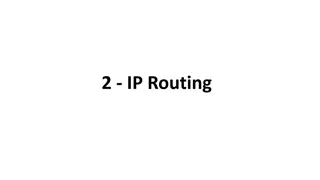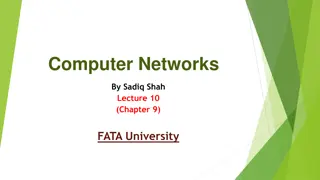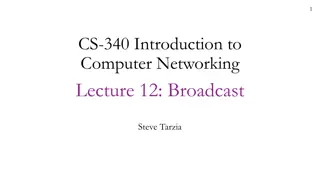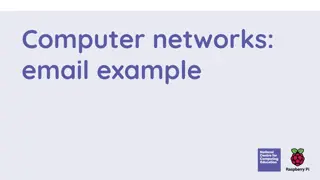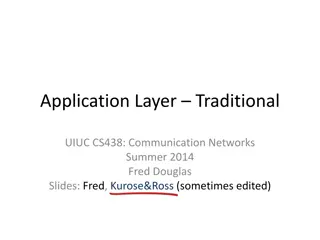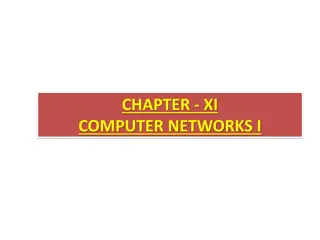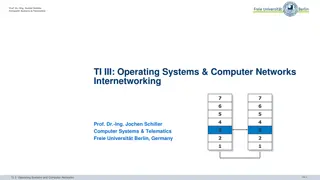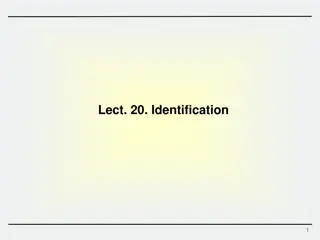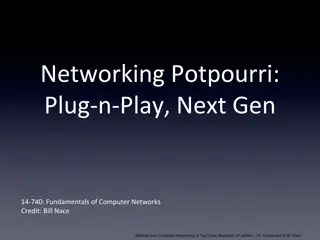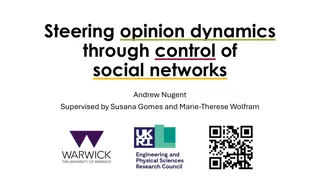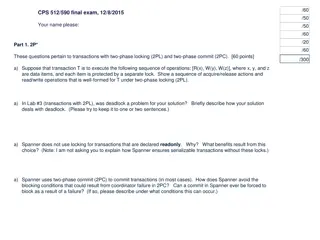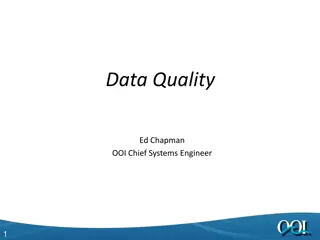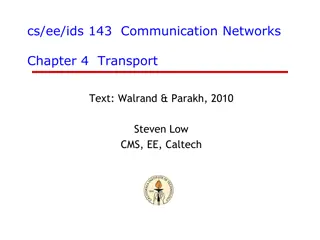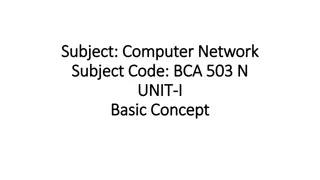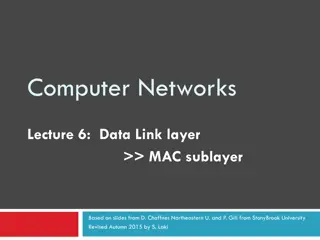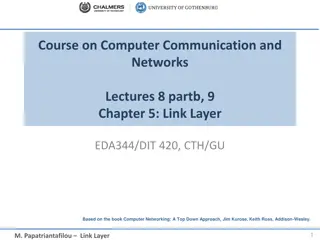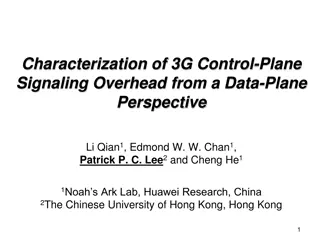Data Link Control and Protocols in Computer Networks
This chapter discusses various protocols for handling data link control in computer networks, focusing on noiseless and noisy channels. It covers protocols like Stop-and-Wait ARQ, Go-Back-N ARQ, and Selective Repeat ARQ, explaining how they ensure error-free transmission and flow control. The concept of sequence numbers for frame identification and the operation of Stop-and-Wait ARQ protocol are also detailed.
Download Presentation

Please find below an Image/Link to download the presentation.
The content on the website is provided AS IS for your information and personal use only. It may not be sold, licensed, or shared on other websites without obtaining consent from the author. Download presentation by click this link. If you encounter any issues during the download, it is possible that the publisher has removed the file from their server.
E N D
Presentation Transcript
3 Computer Networks Chapter Seven DATA LINK LAYER Data Link Control and Protocols (Part II b) Asst. Prof. Dr. Mazin S. Al-Hakeem
7.6- Protocols Noiseless (error-free) Channels Noisy (error-creating) Channels Noiseless channels are the ideal channel in which no frames are lost, duplicated, or corrupted. Although the Stop-and-Wait Protocol gives us an idea of how to add flow control to its predecessor, noiseless channels are nonexistent (i.e. the error control are ignored). We will introduce two protocols for this type of channel. The first is a protocol that does not use flow control (Simplest Protocol); the second is the one that does (Stop-and- Wait Protocol). We discuss three protocols in this section that use error control. Stop-and-Wait ARQ Go-Back-N ARQ Selective Repeat ARQ Of course, neither has error control because we have assumed that the channel is a perfect noiseless channel.
7.6- Protocols 7.6.2- Noisy (error-creating) Channels A. Stop-and-Wait ARQ Protocol
7.6- Protocols 7.6.2- Noisy (error-creating) Channels A. Stop-and-Wait ARQ Protocol This protocol called the Stop-and-Wait Automatic Repeat Request, adds a simple error control mechanism to the Stop-and-Wait Protocol. Error correction is done by keeping a copy of the sent frame and at the same time, it starts a timer. If the timer expires and there is no ACK for the sent frame, the frame is resent, the copy is held, and the timer is restarted.
Sequence Numbers (seqNo & ackNo) For identification purpose, both data frames and ACK frames are numbered by using sequence numbers. A field is added to the data frame to hold the sequence number of that frame. In Stop-and-Wait ARQ the sequence numbers are based on modulo-2 arithmetic. So the sequence numbers are: 0, 1, 0, 1, 0, 1, 0, 1, 0, 1, 0, 1, 0, 1, 0, 1 ... For example, if frame 0 has arrived safe and sound, the receiver sends an ACK frame with acknowledgment 1 (meaning frame 1 is expected next). If frame 1 has arrived safe and sound, the receiver sends an ACK frame with acknowledgment 0 (meaning frame 0 is expected).
7.6- Protocols 7.6.2- Noisy (error-creating) Channels A. Stop-and-Wait ARQ Protocol Operation The sending device keeps a copy of the last frame transmitted until it receives an acknowledgment for that frame. A data frames uses a seqNo (sequence number); an ACK frame uses an ackNo (acknowledgment number). The sender has a control variable, which we call Sn that holds the sequence number for the next frame to be sent (0 or 1). The receiver has a control variable, which we call Rn that holds the number of the next frame expected. When a frame is sent, the value of Sn is incremented (modulo-2), which means if it is 0, it becomes 1 and vice versa. When a frame is received, the value of Rn is incremented (modulo-2), which means if it is 0, it becomes 1 and vice versa.
EXAMPLE (1) Frame (0) acknowledged. is sent and Frame 1 is lost and resent after the time-out. The resent acknowledged and the timer stops. frame 1 is Frame acknowledged, acknowledgment is lost. The sender has no idea if the frame or the acknowledgment is lost, so after the time-out, it resends frame (0), which is acknowledged. (0) is sent but and the
Stop-and-Wait ARQ modulo-2 0, 1, 0, 1,
Stop-and-Wait ARQ modulo-2 0, 1, 0, 1,
Stop-and-Wait ARQ modulo-2 0, 1, 0, 1,
Computer Networks Chapter Seven DATA LINK LAYER Data Link Control and Protocols (Part II b) Asst. Prof. Dr. Mazin S. Al-Hakeem




